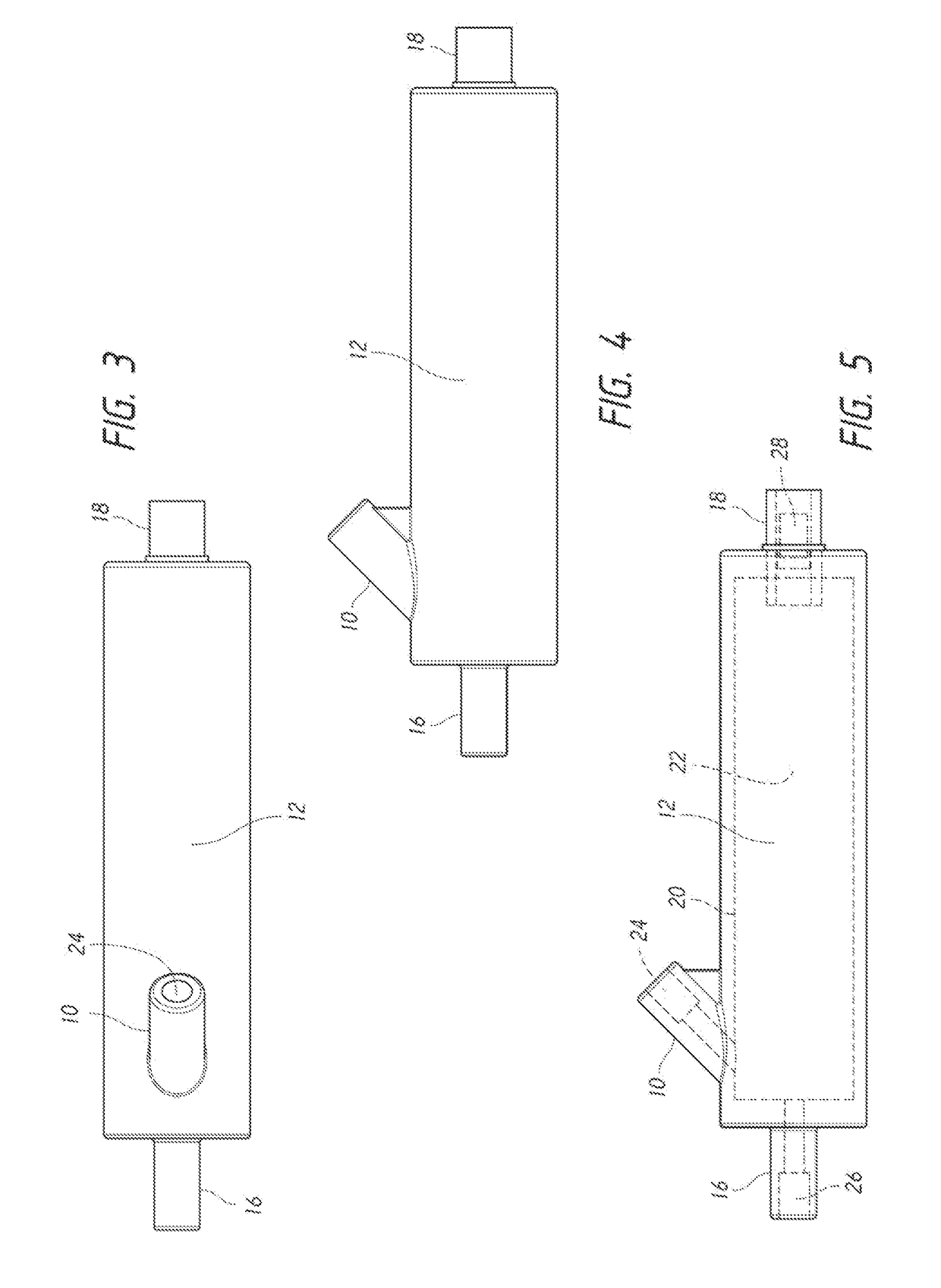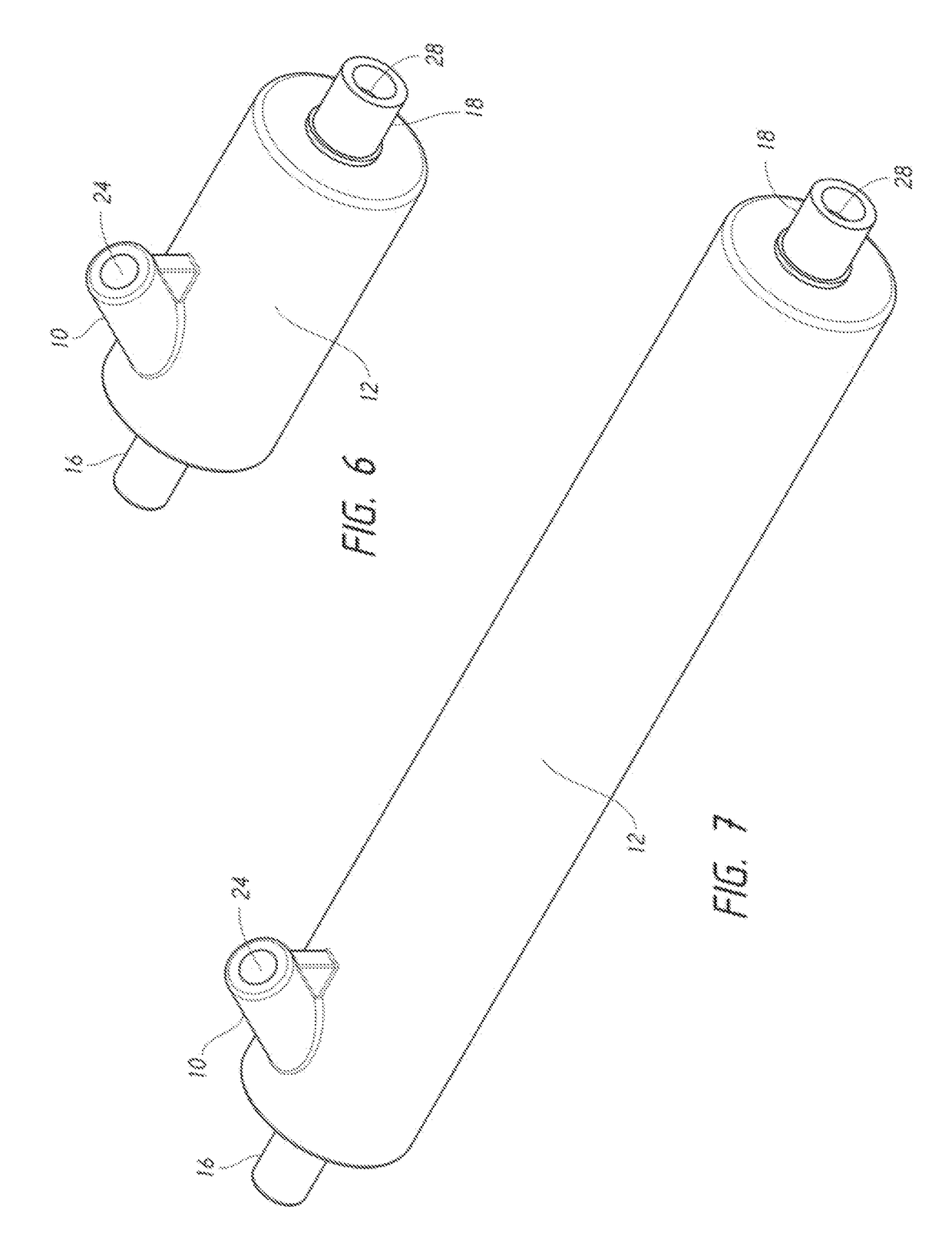Gas Removal Apparatus and Related Methods
a technology of gas removal apparatus and gas removal chamber, which is applied in the direction of intravenous devices, instruments, other medical devices, etc., can solve the problems of air pockets which can be detrimental to the instrument or process, create problems, problems, and negatively affect the outcome of the process or product, and achieve the effect of convenient re-filling
- Summary
- Abstract
- Description
- Claims
- Application Information
AI Technical Summary
Benefits of technology
Problems solved by technology
Method used
Image
Examples
Embodiment Construction
[0032]A fluid delivery system is to include an air removal device (e.g., air catch, degasser, etc.). The fluid delivery system is configured to transport a fluid from a fluid source to a patient through generally closed passage, such as a passage provided by a length of tubing. In other embodiments, the fluid may be supplied from another source, such as a bottle or other closed, sterile container. The fluid delivery system may be used to deliver a variety of fluids, each containing varying levels of viscousness, to the blood vessel of a patient including, but not limited to, volume expanders (e.g., a saline solution (NaCl) as fluid replacement to fight dehydration, a glucose solution etc.), whole blood (e.g., a blood transfusion), blood components (e.g., red blood cells, plasma, platelets, etc.), or medicine (e.g., chemotherapy medicine, antibiotics, etc.)
[0033]The fluid delivery system may be coupled via an appropriate outlet connector to a catheter inserted through the skin and in...
PUM
 Login to View More
Login to View More Abstract
Description
Claims
Application Information
 Login to View More
Login to View More - R&D
- Intellectual Property
- Life Sciences
- Materials
- Tech Scout
- Unparalleled Data Quality
- Higher Quality Content
- 60% Fewer Hallucinations
Browse by: Latest US Patents, China's latest patents, Technical Efficacy Thesaurus, Application Domain, Technology Topic, Popular Technical Reports.
© 2025 PatSnap. All rights reserved.Legal|Privacy policy|Modern Slavery Act Transparency Statement|Sitemap|About US| Contact US: help@patsnap.com



